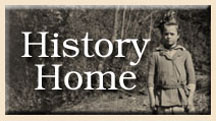

Contemporary Arrowmont: Page 2
In addition to providing vast educational opportunities for amateur and professional artists, contemporary Arrowmont has provided a place for professional artists to meet and exchange ideas. Since 1979, the school has hosted a variety of conferences, including the American Craft Council -- Southeast Conference, the Form and Imagery Conference, the Tennessee Art Education Association Conference, the Paper: USA and Finland Contrasts Conference, and the Tennessee Watercolor Society workshop. The school has also hosted conferences devoted to specific craft mediums, such as leather, fiber, enameling, and polymer clay. The most notable of these conferences, given its impact on the larger arts and crafts community, was the school’s 1985 woodturning conference. So successful was this conference that participants later met to form the American Association of Woodturners. To express their gratitude, AAW members created a totem pole for the school, which still occupies a prominent spot on the campus, just to the east of the Emma Harper Turner Building.
Thanks to its outstanding gallery program, Arrowmont has also been able to host numerous exhibitions. Some of these exhibitions, such as the Southeastern Contemporary and Traditional Basketry Forms Exhibition (1979), the Forms of Leather Exhibition (1982), the Kaleidoscope: Directions in Surface Design Exhibition (1983), and All Things Considered Exhibition (1999), just to name a few, were staged alongside conferences held at the school. Others, such as the annual Artists in Residence Exhibition and Arrowmont Faculty and Staff Exhibitions, were designed to give Arrowmont employees and promising young artists an opportunity to showcase their work. Additionally, Arrowmont has utilized its gallery space to exhibit work produced by local artists and those from the greater Southeast region. Since 1980, the school has consistently displayed the work of artists from Sevier County, Tennessee, and hosted numerous “Spotlight” on Southeastern Crafts exhibitions, the Tennessee Artist/Designers Invitational Exhibition, Annual Exhibitions of the Tennessee Watercolor Society, and the Smoky Mountain Woodturners Exhibition.
None of this would have been possible, of course, without firm leadership. Fortunately, in this regard, Arrowmont has enjoyed remarkable stability over the years.
Arrowmont’s first director, University of Tennessee Professor of Craft Design Marian Heard (1968-1977), was the natural choice for the job. Having directed the highly successful Pi Beta Phi Summer Workshop in Crafts and Community Recreation since 1947, Heard was more than familiar with the fraternity’s expectations for Arrowmont (particularly the fraternity’s desire to make the school accessible to both amateur and professional artists). She was also well-acquainted with the people of Gatlinburg, and therefore mindful of their concerns about the sweeping changes taking place on the former Settlement School campus. As Heard herself once put it, there was a great deal of “apprehension” among the townspeople about the new school, primarily because they feared that a sudden influx of outsiders -- college students in particular -- might serve as a conduit of unwelcome social change. Knowing this, Heard made a priority of recruiting “students and faculty that would fit into a traditional setting.”
Heard’s immediate successor, Ray Pierotti, enjoyed only limited success during his brief tenure (1977-1979). Given free rein to direct the school as he saw fit, Pierotti decided to recast Arrowmont in the mold of the Cranbrook Academy of Art, an institution that was (and still is) dedicated primarily to the training of professional artists. Rather than deviate from its preferred goal of training professional and amateur artists side-by-side, the Arrowmont Board of Governors made the difficult decision to dismiss Pierotti and adopt new leadership. After a brief search, the Board of Governors appointed Arrowmont’s then Assistant Director Sandra Blain to the position of full-time Director in 1979
| <<< Page 1 | Page 2 |
 |
|